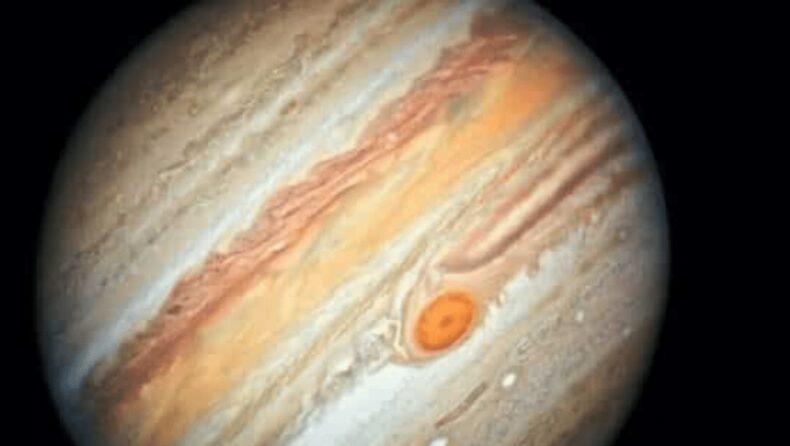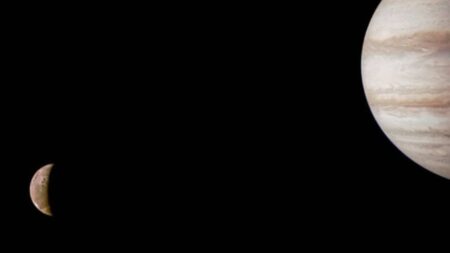Jupiter, the largest planet in the solar system, will make its closest approach to Earth since 1963 – almost six decades ago, on Monday. The massive planet is approximately 600 million miles away from Earth at its farthest point.
The American Space Agency, National Aeronautics and Space Administration (NASA) announced that on Monday, September 26th, when Jupiter reaches opposition, stargazers can expect to have excellent views of the giant planet throughout the entire night.
On Monday, Jupiter, the largest planet in the solar system, will approach the Earth more closely than it has since 1963, nearly six decades ago. At its greatest distance from the Earth, the massive planet is roughly 600 million miles away.
According to a NASA statement, opposition occurs when, from the perspective of Earth’s surface, an astronomical object rises in the east as the Sun sets in the west, placing the object and the Sun on opposite sides of the planet.
“Stargazers: Jupiter will approach the Earth at its closest distance in 59 years! Exceptional views are possible on September 26, if the weather cooperates. A good pair of binoculars should be sufficient to observe some details, but a large telescope is required to observe the Great Red Spot, tweeted the American Space Agency.
Why will Jupiter approach the Earth?
Every 13 months, Jupiter appears larger and brighter than at any other time of the year. In addition, the planet will approach the Earth at its closest distance since 1963. Due to the fact that Earth and Jupiter do not orbit the Sun in perfect circles, the planets will pass at differing distances throughout the year.
Jupiter’s closest approach to Earth rarely coincides with opposition, so the views this year will be exceptional. Jupiter will be approximately 367 million miles from Earth at its closest approach, roughly the same distance as in 1963.
How do we view Jupiter?
Adam Kobelski, a research astrophysicist at NASA’s Marshall Space Flight Centre in Huntsville, Alabama, stated that the banding and three or four Galilean satellites (moons) should be visible through high-quality binoculars.
To see Jupiter’s Great Red Spot and bands in greater detail, the researcher suggests using a larger telescope and filters in the green-to-blue spectrum. A telescope with a diameter of 4 inches or more and green-to-blue filters would enhance the visibility of these features.
According to Kobelski, the optimal viewing location will be at a high altitude and in a dark, dry area.













